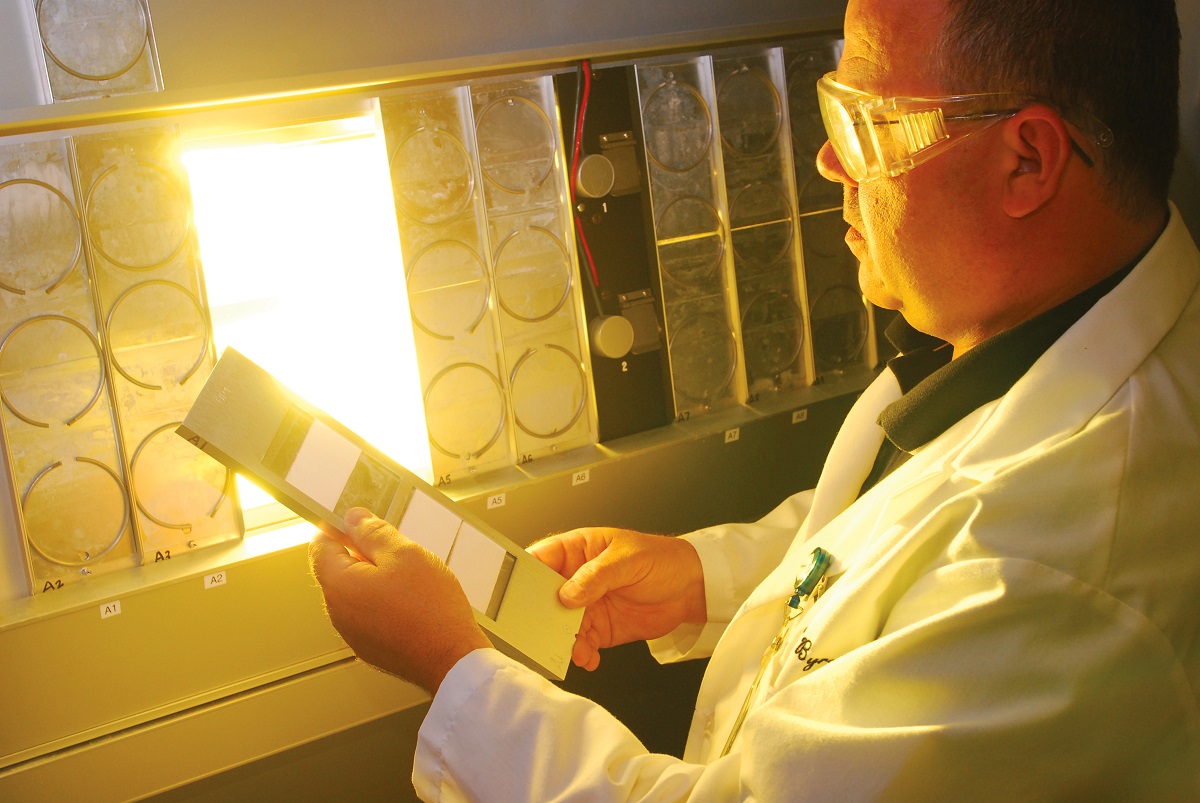Pushing the Boundaries of Sustainability and Materials Science
Research is underway to create windows that meet today’s environmental and performance objectives

Above: SunShield is a high-performance vinyl compound material developed by scientists to ensure color retention and protect against rotting, cracking, pitting, corroding and peeling.
A global push to live more sustainably and reduce our collective carbon footprint is compelling manufacturers to rethink how products are created.
Consider these three phases of window and door products’ lifecycle: Manufacturing, the life of the product in a structure, and end-of-life recyclability.
Paul Adams, who has been with Deceuninck North America for more than 15 years and currently serves as the global vice president of materials innovation, discussed the importance of creating formulas that meet multiple industry and sustainability criteria, remain respectful of the environment, and are recyclable at the end of their lifecycle.

Climate change considerations
During the Massachusetts Institute of Technology’s 2021 Materials Day symposium, research scientist and professor Elsa Olivetti began her opening remarks with, “Materials play a central role in all aspects of the new technologies needed to achieve sustainability goals and address climate change.”
The focus on designing sustainable materials pervades all industries, but it is particularly relevant to the building, design and construction space since it creates a third of the world’s waste.
The climate crisis and ever-increasing global temperatures have placed a greater demand on the research that goes into advancing polyvinyl chloride, or PVC, formulas that the window and door industry uses. The ones previously relied upon are not as effective as they once were. The environment is changing, which mandates higher-performing, longer-lasting windows.
“We must create windows for today, not for an environment that existed 20 years ago,” Adams stresses. “These new products must endure for 25 or 30 years, in addition to remaining recyclable and maintaining 90 percent of their original physical properties at the end of their lifecycle.”
Because higher outside temperatures cause window systems to degrade, materials science teams worldwide are emphasizing the development of new chemistries. “Much of what we do is in response to climate change and is in line with the overall sustainability model of our organization,” Adams notes.
A closer look at chemistry
Where there’s color, there must be the right chemistry in place to allow it to shine over the long haul.
Color plays a big role in the increased homeowner and architect demand for aesthetic options, and the demand for new pigments and properties has required manufacturers in the window and door industry to spend more research and development hours on pigment chemistry.
To move the needle, organizations are even tapping into what works in other sectors. “We explored paints and coatings used specifically for military vehicles that are designed to reflect heat. We then applied that technology to building materials such as PVC extrusions to reduce heat gain in windows,” explains Adams.
Material chemistry also plays a key role in creating products that contribute to a more sustainable built environment. Using plant-based additives is an excellent place to start. Utilizing natural materials creates a cleaner final product that is more recyclable at the end of its lifecycle.
One might not traditionally think “plants” when considering the elements used to create windows or other plastics products, but these sustainable, organic materials can be used as lubricants and serve other important functions in the production of PVC windows and doors.
Looking at material chemistry can also help manufacturers identify methods to reduce other common concerns for window and door profiles, including fading.
Helping the homeowner
Eco-conscious consumers are paying attention to the environment and want to live in homes that save energy and minimize harmful effects on the planet. The industry is progressing, as today’s window and door extrusions are comprised of more eco-friendly materials compared to plastics of the past. This starts at stage one: the composition of the materials used to create the window systems from the start.
Manufacturers need to anticipate what homeowners will need. Energy-efficiency requirements for windows vary by jurisdiction and by climate, but regardless of region, by reducing the amount of thermal loss through a window frame, less energy is required to heat or cool a home. This has a positive impact on the environment, can decrease annual energy costs for homeowners, and create a more comfortable living environment.
Challenges creating opportunity
Supply chain constraints over the past couple of years resulted in the need for manufacturers to shift toward alternative raw material options and, in some cases, complete reformulation. Teams had to adjust and find new ways to create while maintaining or improving upon the properties of materials. This highlights the importance of remaining on the cutting edge of innovation.
As it specifically relates to materials science, Adams shares his organization’s plans for moving forward. “Deceuninck is always striving for better-performing products that protect our environment and make use of natural materials,” Adams says. “If we’re not pushing the boundaries on innovation and keeping the promise of sustainability at the forefront of product development, we’re not doing our part.”